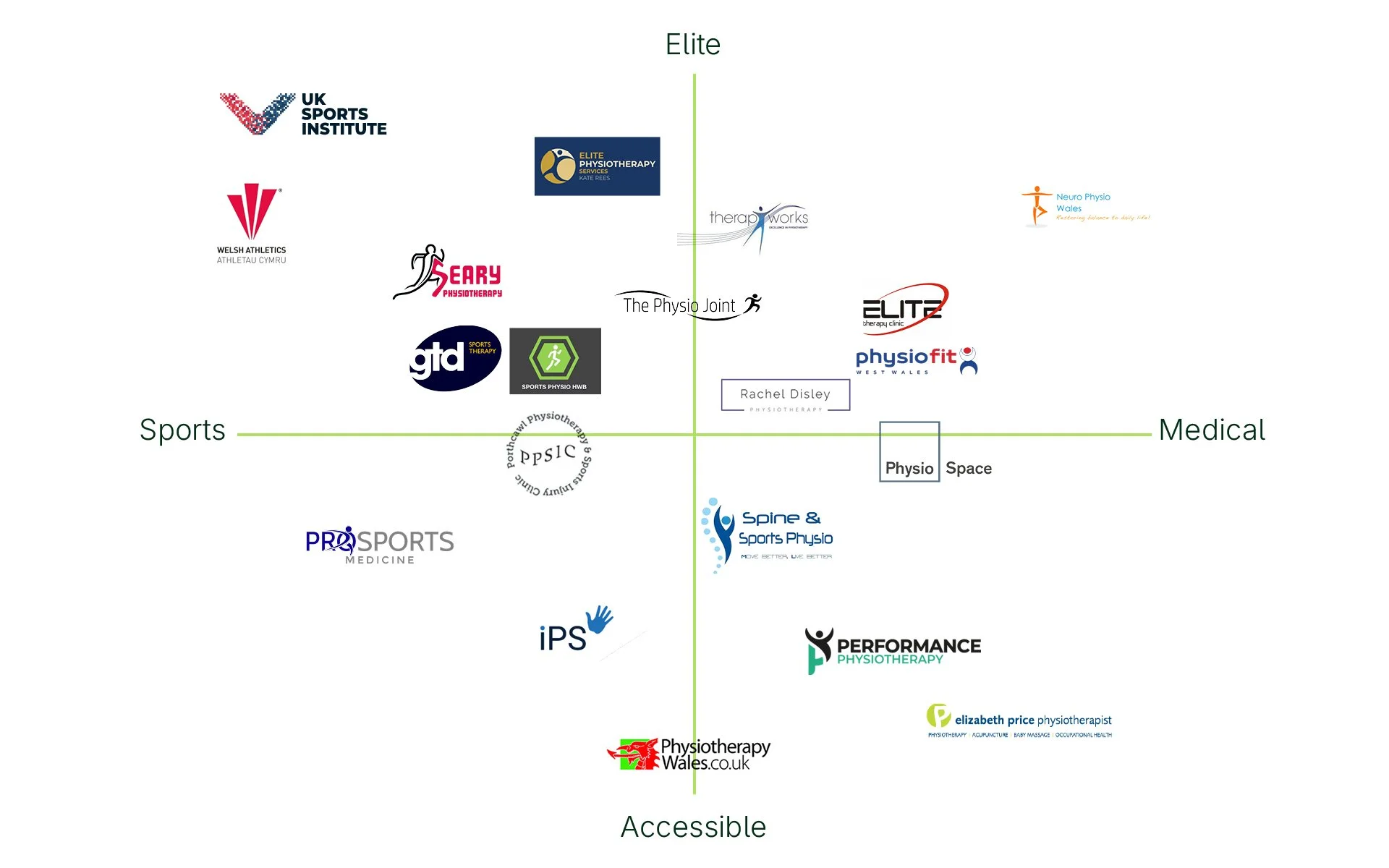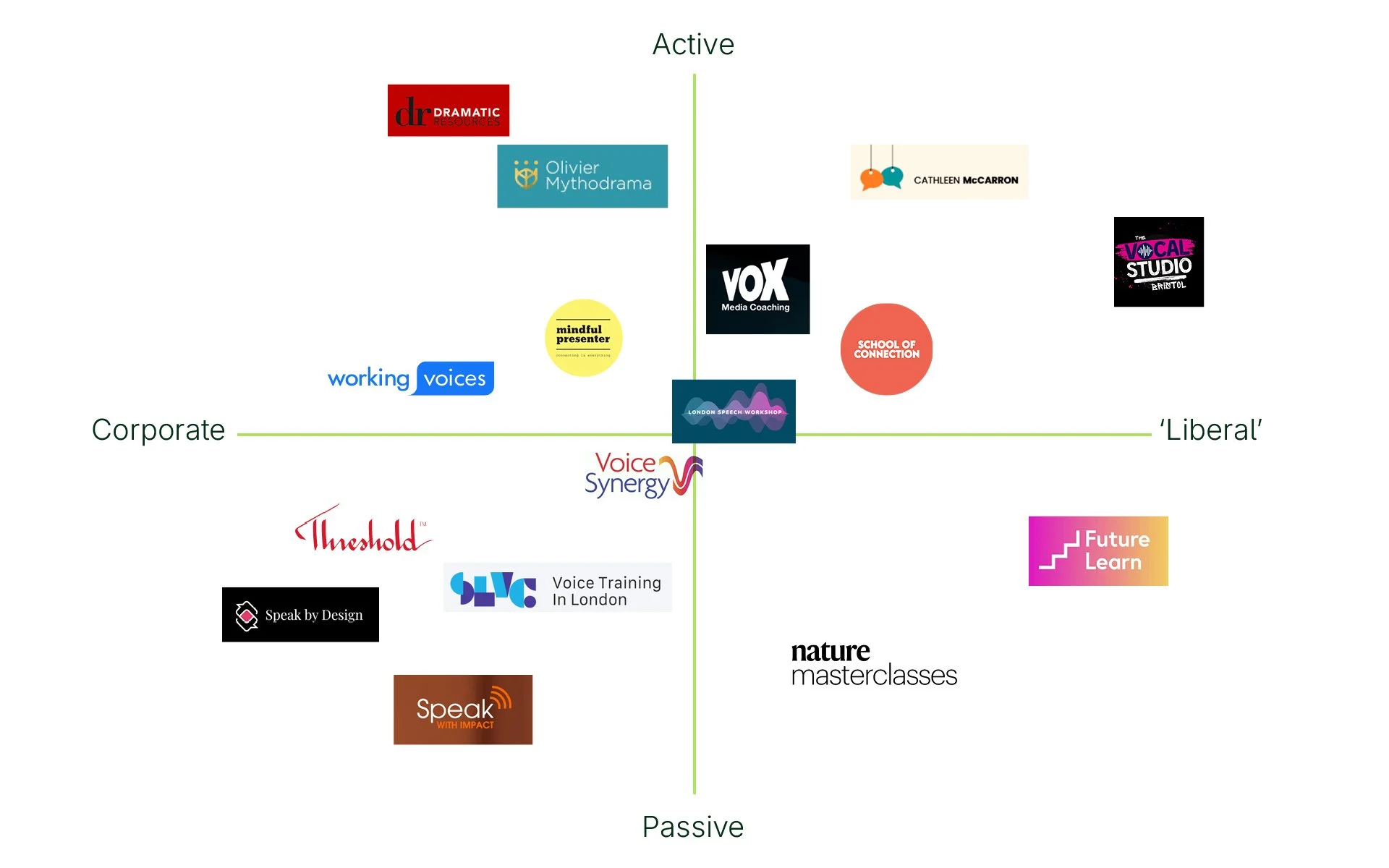Positioning into a corner?
The Dos and don’ts of competitor positioning
If you've ever dipped a toe into marketing, you've probably come across the classic positioning chart – the one with ‘price’ on one axis and ‘quality’ on the other. The examples typically plot either supermarkets, car brands, or chocolate bars into a neat-ish line to show that better quality comes at a higher cost. A tidy visual for a Marketing 101 class, maybe – but not particularly useful when you're doing the real work of building a brand.
And yet, this simplified matrix continues to show up in brand workshops and consultant decks. Why?
At Toponym, we come at positioning from a different angle – because our background is in branding, not just marketing; and branding, at its core, is about creating and managing differentiation for your audience. It’s about perception. The role of positioning in brand strategy isn’t to rank features or prices; it’s to understand how your brand sits in the mind of your audience in relation to your competition.
That’s what perceptual positioning is about. And it’s never as simple as price versus quality.
Audience Insight Shapes the Axes
So if price and quality aren’t the right axes – what are?
That depends entirely on your audience. In our Crash Course in Brand & Brand Strategy workshops, we use local cafés as an example. Participants describe the feel of a familiar independent coffee shop – its interior, music, service, pace – and then we map it along axes like Curated vs. Uncomplicated and Fast-Paced vs. Relaxing. Nine times out of ten, the chosen establishment lands bottom left corner, illustrating that in the minds of the audience, that café is being compared with Coffee #1 or Black Sheep, not the Greggs or McCafés.
That’s a powerful visual for business owners: not just where they think they compete, but where their audience perceives them to compete.
These axes aren’t plucked from thin air. They come from audience conversations, observations, and in some cases, simple qualitative research – language, preferences, behaviours. The closer your axes reflect what actually matters to the people you're speaking to, the more useful the map becomes.
When we worked with Fortify Physiotherapy, the goal was to position them as a sports-specialist physio practice with high accessibility. We knew geography influenced customer choice which made us focus locally, aswell as aligning the type specialist treatment. Plotting competitors on axes of Sports vs. Clinical and Elite vs. Accessible helped us spot who Fortify was truly up against in the mind of their audience and where to start when it came to creating differentiation.
A key point that often gets missed: positioning maps aren’t objective, they’re perceptual. They don’t show where you think your brand sits; they reflect where your audience places you, based on their beliefs, experiences, and expectations.
That’s why internal assumptions can be risky. You might believe your offer is “premium,” but if your customers perceive it as basic, that’s what gets mapped – and that perception becomes the reality you must navigate.
A common mistake in positioning is making it about the business – its values, aspirations, or mission. But perceptual positioning isn’t inward-looking; it demands an outward focus. It lives in the minds of your audience, not in your brand guidelines.
When companies place themselves on positioning maps without audience insight, they risk building strategies on wishful thinking. At best, this results in muddled messaging. At worst, it creates a brand that’s completely misaligned with how people actually see it.
For VOX Coaching, a communications training company working with public sector and higher education clients, the axes became Corporate vs. Liberal and Active vs. Passive. These reflected not just VOX’s personality, but the kind of experience their clients were actually looking for. Importantly, this expanded the competitive set beyond similar training providers – including online courses and specialist platforms that shared overlapping audience mindsets.
This is one of the great strengths of perceptual positioning: it helps you reframe your competition not as “businesses doing the same thing” but as “options your audience might consider instead.”
You might ask, “But aren’t these maps supposed to help you find a gap in the market?”
Sometimes, yes. But no successful small business starts life because the founder drew two lines on a whiteboard and spotted an empty quadrant. And when large companies do it, it’s backed by layers of audience research, product development, and budget.
Positioning is not about finding space. It’s about owning space – intelligently and intentionally, whilst knowing who to look over your shoulder for.





